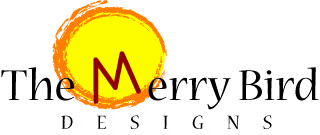This is an excellent tip sheet written for designers creating a contract
for business by
Angela Ferraro-Fanning .
When I started my own design business, one of the first things I put in place was a well-written contract. Before I spoke to an attorney about drafting an official document for me, I made sure I had my design process established. I also did a lot of research as to what other design firms and freelancers were including in their agreements. With something as subjective as design, there are lots of gray areas that need to be clarified as much as possible on paper.
If you’re in the process of drafting a client contract, or if you are considering revising one that already exists, I would recommend including the following list of items:
1. Estimate Terms
When starting a new project with a current or prospective client, I’m always sure to estimate the project time first. In my experience, giving yourself a bit of extra time on the estimate is a good thing. It will cover you in the event any unexpected snags come up. My clients are only billed for the time I spend on their projects, so if I don’t use up all the time allotted on my estimate, I look like a hero who came in under budget. On the flip side, if I find the project needs more time for completion (for whatever reason), I’m sure to notify my clients before continuing work and racking up additional hours.
There are some items that are hard to estimate for such as any special fonts or stock images the client may want to purchase later on. In such cases, I’ve stated on my estimate that these costs will be added to the client’s remaining balance. Of course, I’m sure to get the client’s written approval first, before I incorporate these elements into the design.
Other items I try to include in the project bid are rush-order charges, any special project fees, and any other professional costs that may be incurred along with an estimate expiration date. An exact description of the service/product you are providing to your client in the estimate is helpful as well, along with an invoicing schedule. It is my advice to have your client sign your estimate individually before starting work. This not only ensures everyone is on the same page at the beginning, but it also helps in the event a legal issue should arise.
2. Changes
How many changes or project revisions are you willing to make? After deciding on your design process, you should easily be able to answer this question. I provide my client with three rounds of changes before additional charges will apply.
3. Turn-Around Times
It doesn’t hurt to mention how quickly your client should expect to see completed work. This often comforts the client as they know they aren’t being ignored while waiting for a proof. This also requires that you, as the designer, stay on track and provide your clients with project proofs and deliverables in a timely fashion.
4. Client Approval
How should the approval process work? Do you send hard-copies of the design, ask the client to sign-off, and then return to you? Is email approval acceptable? Will you send a print-design to the printer if the client is in a rush, without written consent? All good items to discuss in your contract.
5. Promotions
It is written in my contract that I am allowed, as the designer, to show client work in my online portfolio and in printed form. I also ask my clients to allow me permission to enter any pieces I see fit into design competitions and promotions. Some clients are uncomfortable with this and I deal with them on a case-by-case basis. However, is there a general rule you’d like your clients to agree to?
6. Confidential Information
During the course of working with your client, chances are you will be exposed (and they, likewise) to private information. By signing my contract, clients are agreeing that they will not make public any confidential information pertaining to my business. They also acknowledge that I will keep their business information confidential as well.
7. Relationship to the Client
Some designers feel it is important to clarify that by working with the client, they are not considered an employee of the client. Work will be done as a freelance or business service, operate on the designer’s schedule and take place at the designer’s facilities. Where and when you complete your client work is up to you, and should be included in your contract. Some clients ask their freelancers to work strictly on-site. Is this agreeable to you?
8. Warranties
Say you created a website for a client and the project has been completed for a month or so. They have even paid their final balance. Out of the blue, you receive a phone call from the client saying they discovered a typo on the site. Are you willing to fix this at no charge or is there a fee? For how long after the work has been published or completed are you willing to repair any broken links, re-submit any artwork to the printer, or fix grammatical errors?
9. Contract Termination
For whatever reason, you or your client no longer want to work with one another. Can you terminate your agreement and how do you go about doing so? Does any work have to be completed or can you quit the job cold-turkey? What about client property? If they supplied you with discs and images for the job, how soon do those need to be returned? All good items to think about when creating a contract.
10. Force Majeure
There are “acts of God” that can prevent us, as professionals, from completing a job. If a fire takes down your home office or if a flood destroys your small business location, chances are you won’t be able to meet your clients’ deadlines. Just as a precaution, I would suggest including this in your contract. Worse case scenario, you have no home nor computer, the last you thing you would want is an angry client coming after you for not completing a job in time.
11. Other Legal Considerations
Other items to think about may include how you and a client may handle a dispute should it arise, third-party involvement and which party would be responsible for any legal costs, should they be incurred.
12. Sign Please!
After all has been written and your attorney has approved, don’t forget the signature. Simply submitting the document to your client doesn’t count as an agreement. To make matters convenient, allow the client to return your contract signed via snail mail, fax or email.
Again, let me stress that I’m not a lawyer and this does not count as legal advice. These are simply points for you to consider including in your contract, which should be drafted by a licensed attorney. Over the client relationships I’ve had, there have been times where simple questions pop up regarding my process or payment plans. Having a contract on hand, just to answer simple questions, is a great resource. It can offer you a little piece of mind and protection as well.










